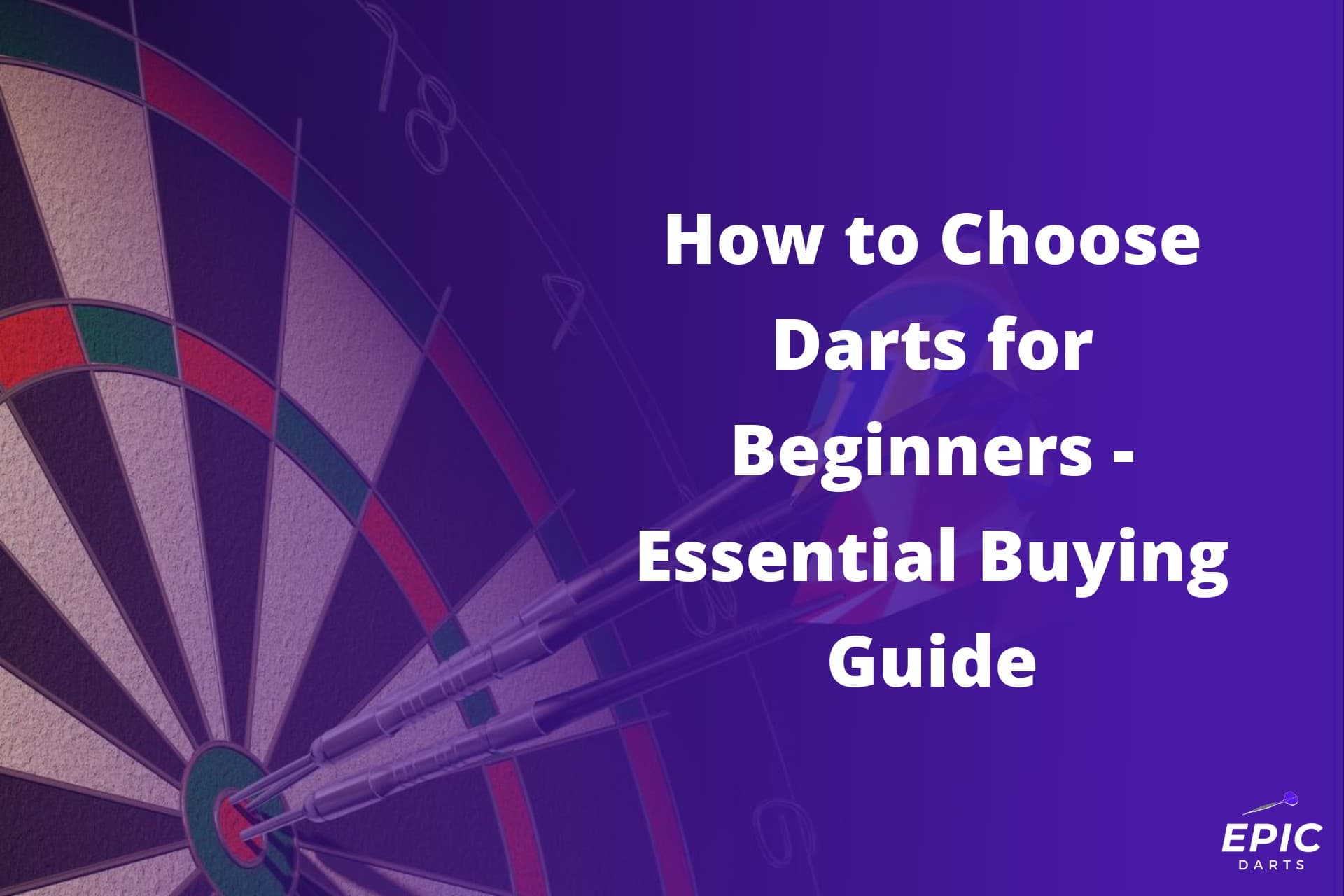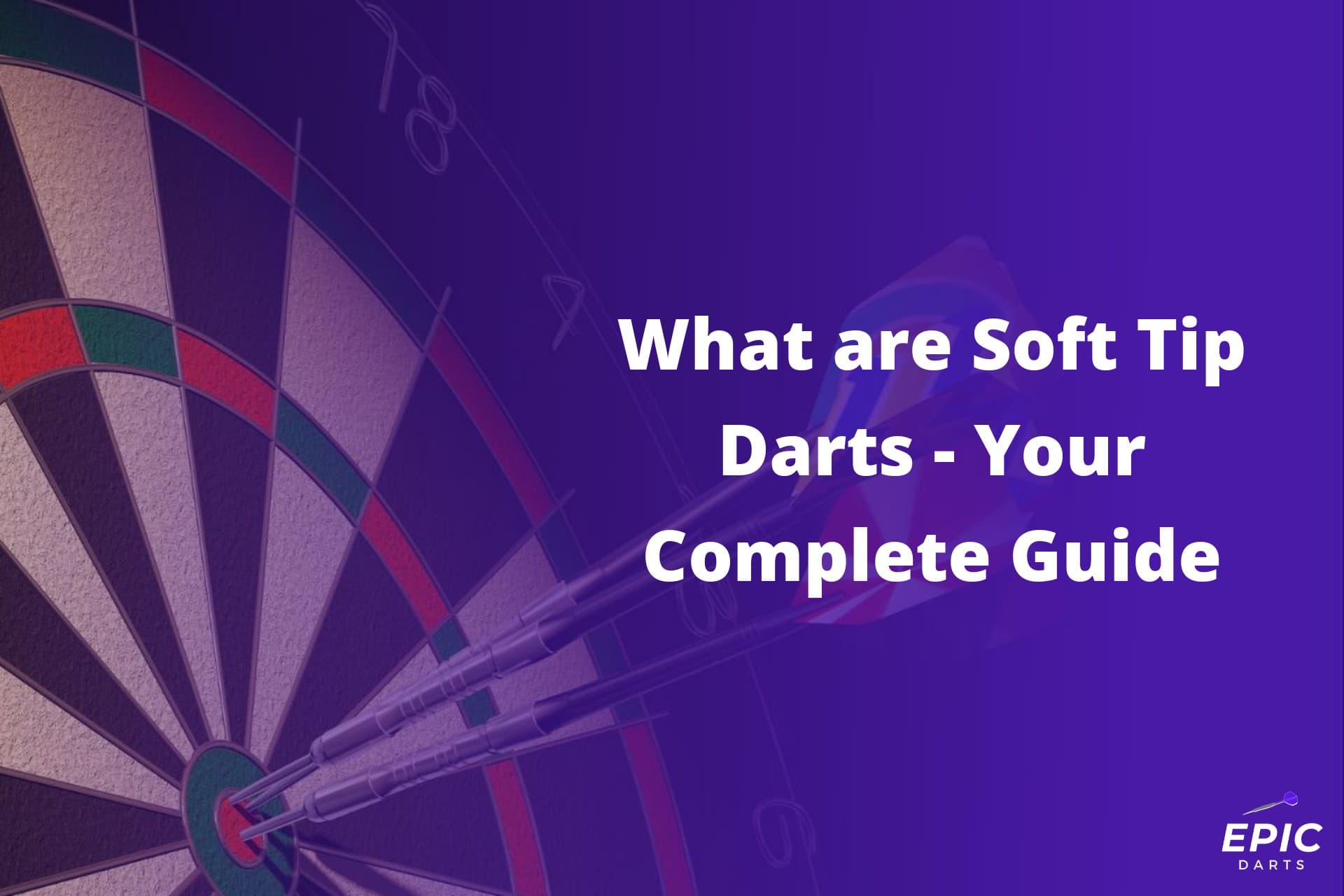Darts may seem like a simple game at first glance, merely throwing small missiles at a circular target. Yet, anyone who has attempted to play seriously quickly realizes that there’s more to darts than meets the eye. It’s a game of skill, precision, and strategy. So, if you’re looking to improve your dart-playing skills and wondering how to practice effectively, you’ve come to the right place.
Practicing darts involves a combination of consistent technique, strategic targeting, and focus. Begin by ensuring your grip, stance, and throwing technique are correct and consistent. Then, work on your aim by trying to hit different points on the board systematically.
There’s more to mastering darts than just these basics. Strategies differ based on whether you’re playing ’01 games or Cricket, understanding opponent’s weaknesses can play a big role, and mental toughness is as important as physical skill in this game.
So, are you ready to play and hit the target in the world of dart game mastery? Get in position, take your stance, and let’s match your skills against the best! Let’s get started!
The Best Practice Routine for Game Improvement
Establishing a structured practice routine is crucial to play and hit the match. Tailor your routine to your specific needs to rank higher. By following a well-designed practice routine, you can play your way to a higher rank and hit the top of your game. Enhance your skills and take your performance to the next level, match after match.
To start, create a practice session that includes drills to hit the ball accurately and match your opponents’ shots. These drills will help improve your ranking and scoring in the game. This variety will help you improve your rank and match performance, develop a well-rounded skill set, and enhance all areas of your gameplay. Here are some examples of drills you can include in your routine to rank and match.
- Accuracy Drill: Set up targets on the dartboard and focus on hitting specific areas consistently to match and rank your skill level. Start with larger targets and gradually decrease their size as you improve in order to rank higher and match better.
- Scoring Drill: Challenge yourself by aiming to rank high in scoring areas such as triple 20 or bullseye. Match your skills to hit those targets. Keep track of how many points you accumulate within a given number of throws and strive to beat your previous scores.
- Pressure Drill: Simulate game-like conditions by practicing under pressure situations. For instance, set a target score and give yourself limited throws to reach it. This drill helps improve focus and composure during competitive games.
- Check-out Drill: Work on finishing games efficiently by practicing check-out combinations. Start with simple finishes like double 16 or double 10, then progress to more challenging ones like bullseye-double 16.
In addition to incorporating various drills into your practice routine, it’s essential to optimize each session by setting goals and tracking your progress. This approach ensures that you stay motivated and continuously strive for improvement.
Set specific goals for each practice session, such as hitting a certain number of bullseyes or achieving consistent accuracy in a particular area of the board. Breaking down larger goals into smaller, achievable milestones makes the process more manageable and rewarding.
Tracking your progress is equally important; it allows you to monitor improvements over time and identify areas that require further attention. Keep a logbook or use a smartphone app to record your scores, achievements, and any insights gained during practice. This data will help you analyze trends, identify weaknesses, and adjust your practice routine accordingly.
Remember that consistency is key. Aim for regular sessions rather than sporadic ones. Dedicate a specific time slot each week solely for practicing darts. By establishing this routine, you’ll develop muscle memory and improve your overall game.
Effective Darts Practice Routines for Enhanced Performance
To become a skilled darts player, it’s essential to dedicate time and effort to practice. However, simply throwing darts aimlessly won’t lead to significant improvements in your performance. To enhance your skills and achieve better results, you need to adopt effective practice routines that target specific areas of improvement.
Explore Various Practice Routines
Exploring different practice routines is crucial for honing your darts skills. Each routine focuses on specific aspects of the game, allowing you to identify areas where you can improve. Here are a few examples:
- Accuracy Training: Set up targets on the dartboard and focus on hitting specific segments consistently. Start with larger targets and gradually reduce their size as you improve.
- Scoring Games: Engage in games like “Around the Clock” or “Cricket” that require strategic thinking and precision throws. These games help develop your decision-making abilities while under pressure.
- Group Challenges: Organize friendly competitions with fellow dart players to create a competitive environment that simulates real-game scenarios. This will help you refine your skills while enjoying the camaraderie of fellow enthusiasts.
Develop Muscle Memory through Repetition Exercises
Consistency is keyAnd muscle memory plays a vital role in achieving this consistency. By practicing repetitive exercises, you train your muscles to execute precise throws consistently without conscious effort.
To develop muscle memory effectively:
- Focus on Technique: Pay attention to your grip, stance, and release technique during each throw. Consistently repeating correct form helps reinforce muscle memory for optimal performance.
- Targeted Repetitions: Devote dedicated sessions solely focused on repeating specific throwing motions repeatedly until they become second nature.
- Progressive Intensity: Gradually increase the intensity of repetition exercises by challenging yourself with smaller targets or longer distances. This will push your muscles to adapt and improve over time.
Utilize Challenging Drills for Enhanced Performance
To elevate your darts game, it’s essential to practice drills that simulate real-game scenarios, allowing you to sharpen your skills under pressure. These challenging drills can help enhance your performance:
- Pressure Point Practice: Set specific targets on the dartboard and allocate points to each segment. Aim to accumulate a certain score within a limited number of throws, adding pressure to replicate competitive situations.
- Double Trouble: Focus on hitting doubles consistently by aiming at the outer ring of the dartboard. This drill improves accuracy and builds confidence when aiming for crucial finishing shots during games.
- Moving Target Challenge: Create a moving target by attaching a small object like a feather or paper strip onto the dartboard. Aim to hit this target while it sways back and forth, improving your ability to adjust throws quickly.
By incorporating these challenging drills into your practice routine, you’ll develop the necessary skills and mindset required for improved performance in darts.
Mastering High Scores: Scoring, Checkouts, and Accuracy
Maximizing Scoring Potential
Scoring high is the ultimate objective. To achieve this, you need to learn proven techniques that can help you maximize your scoring potential during gameplay. One crucial aspect of scoring is understanding the difficulty level associated with each target on the dartboard. By recognizing which areas are easier or harder to hit, you can strategically aim for higher scores.
To improve your scoring skills, consider the following strategies:
- Focus on hitting specific targets: Instead of randomly throwing darts at the board, work on hitting particular sections consistently. For instance, practice aiming for triple 20s or bullseyes repeatedly until you develop accuracy.
- Develop a ranking system: Create a list of different score levels and assign points to each one based on their difficulty. Challenge yourself to reach higher ranks by consistently achieving those scores during practice sessions.
- Experiment with different techniques: Explore various throwing styles and grips to find what works best for you in terms of accuracy and consistency. Remember, mastering high scores requires experimentation and finding the approach that suits your playing style.
By implementing these strategies into your practice routine, you’ll gradually enhance your ability to score higher in dart games.
Efficient Checkouts and Precise Finishing
Scoring high alone isn’t enough; being able to efficiently finish games is equally important in becoming a master of darts. The checkout phase involves reducing your score from a specific number down to zero within three darts or less.
Consider these tips for improving checkouts and finishing games with precision:
- Plan ahead: Before reaching the checkout stage, calculate potential combinations that would allow you to finish the game quickly while using as few darts as possible. This strategic thinking will give you an advantage over opponents who rely solely on luck during this critical phase.
- Practice common checkouts: Memorize common checkout combinations, such as 60 (20-20-Double Top) or 32 (16-Double 8). By repeatedly practicing these checkouts, they will become second nature, and you’ll be able to execute them swiftly during actual games.
- Work on your mental game: The pressure of finishing a game can sometimes lead to missed shots. Enhance your mental resilience by practicing under similar conditions and visualizing successful checkouts. This mental preparation will help you maintain focus and composure when it matters most.
Efficient checkouts and precise finishing require a combination of strategic planning, practice, and mental fortitude. By honing these skills, you’ll increase your chances of emerging victorious in dart games.
Enhancing Accuracy through Targeted Practice
Accuracy is the foundation of any successful darts player. To enhance your accuracy, it’s essential to focus on hitting specific targets consistently. By dedicating time to targeted practice sessions, you can improve your aim and overall performance.
Consider the following techniques for enhancing accuracy:
- Concentrate on specific areas: Identify the sections of the dartboard that need improvement based on your gameplay observations. Dedicate practice sessions solely to hitting those areas until you achieve consistent accuracy.
- Utilize drills: Incorporate drills into your practice routine that target different parts of the dartboard.
Doubles Challenge: Hitting Double Targets with Precision
Master the art of hitting doubles consistently by refining your aim and control. Practice specialized drills that specifically target double segments on the dartboard. Strengthen mental focus and concentration while aiming at double targets.
Refining Your Aim and Control
To become proficient in hitting doubles, you must first refine your aim and control. The key is to develop muscle memory through repetitive practice. Start by focusing on hitting the bullseye consistently, as it serves as a good foundation for targeting the smaller double segments.
- Begin by standing at a comfortable distance from the dartboard, ensuring that your arm is fully extended.
- Align your dominant eye with the target, allowing for better accuracy.
- Maintain a relaxed grip on the dart, avoiding excessive tension in your arm.
- Visualize hitting the desired double segment before throwing, enhancing your focus.
Specialized Drills for Double Targets
Practicing specialized drills can significantly improve your ability to hit doubles consistently. These exercises specifically target double segments on the dartboard, allowing you to hone your precision.
- Double-in Drill: Start with 301 or 501 points and begin each game by hitting a double segment to enter the scoring zone.
- Doubles Round Robin: Set up a rotation of various double segments (e.g., D20, D16, D10) and aim to hit each one multiple times consecutively.
- Random Doubles: Randomly select different double segments to aim for during each throw, challenging yourself to adapt quickly.
Strengthening Mental Focus
Aiming at double targets requires not only physical skill but also mental focus and concentration. Here are some techniques to strengthen these aspects:
- Visualization: Before stepping up to throw, visualize yourself hitting the desired double segment repeatedly in your mind’s eye.
- Breathing Techniques: Practice deep breathing exercises to calm your mind and enhance focus.
- Eliminating Distractions: Create a quiet and clutter-free environment to minimize distractions during practice sessions.
By incorporating these mental techniques into your practice routine, you can improve your ability to hit doubles consistently.
Conquering the Mind Game: Enhancing Your Natural Line into Doubles
Understanding how body positioning affects accuracy when aiming at doubles is crucial in improving your dart game. The way you position your body can greatly impact your ability to hit those double segments on the board consistently. Here are some tips and tricks to help you align yourself correctly and enhance your natural line into doubles.
It’s important to have a stable stance. Stand with your feet shoulder-width apart, ensuring that your weight is evenly distributed. This will provide a solid foundation for your throw and allow for better control over your aim. Keep your upper body relaxed but engaged, as tension can negatively affect your accuracy.
To align yourself correctly with the double segments on the board, start by visualizing an imaginary line extending from the center of the bullseye to the desired double segment. Position yourself parallel to this line, with your dominant eye directly in line with the target. This alignment will give you a clear sightline and increase your chances of hitting the intended double.
Training your mind to overcome pressure situations when attempting doubles is just as important as physical practice. One effective technique is simulating game-like scenarios by playing against a virtual opponent or practicing with fellow players. Create pressure situations where you have a specific number of darts left to finish a round, forcing you to focus and perform under stress. This type of drill helps condition your mind for real-game scenarios and improves decision-making abilities.
Another helpful tip is breaking down doubles into smaller targets during practice sessions. Start by aiming for larger sections of the double segment before gradually narrowing down your focus onto smaller areas within that section. For example, if aiming for Double 16 (32 points), begin by targeting any area within that segment before refining it further towards specific numbers like 16 or 8.
Consistency is key in darts, so make sure to practice regularly. Set aside dedicated times during the day to work on your doubles, aiming for a specific number of attempts each session. By practicing consistently, you’ll develop muscle memory and improve your ability to hit doubles over time.
In addition to these tips, understanding the rules of the game and studying different strategies can greatly enhance your performance. Familiarize yourself with the scoring system, learn from experienced players, and try out various techniques to find what works best for you.
Remember, mastering the mind game in darts takes time and practice. By understanding body positioning, aligning yourself correctly with double segments on the board, training your mind under pressure situations, and practicing consistently, you’ll be well on your way to enhancing your natural line into doubles. So grab your darts and start honing those skills today!
Consistency is Key: Reducing Bad Darts for Improved Averages
Throwing darts is a skill that requires precision, focus, and practice. However, even the most seasoned players can sometimes find themselves frustrated by bad throws. Whether it’s missing the target completely or consistently hitting low scores, these mistakes can significantly impact your overall performance.
Identifying Common Mistakes
To improve your dart game, it’s crucial to identify the common mistakes that often lead to bad throws. By recognizing these errors and understanding their causes, you can work towards eliminating them from your technique. Here are some key points to consider:
- Grip: One of the most common mistakes in dart throwing is an inconsistent grip. If your grip on the dart varies from throw to throw, it can greatly affect your accuracy and control. Practice maintaining a consistent grip by focusing on how you hold the dart and ensuring that you replicate it with each throw.
- Stance: Your stance plays a significant role in achieving consistency in your throws. Standing too close or too far from the board can lead to inconsistent results. Experiment with different stances and find one that allows you to maintain balance while comfortably reaching the target.
- Release Point: The release point is another critical factor in achieving accuracy when throwing darts. Releasing too early or too late can result in erratic throws. Focus on finding a consistent release point by practicing your timing and follow-through.
Developing a Consistent Throwing Motion
Once you have identified the common mistakes affecting your throws, it’s time to develop a consistent throwing motion through targeted practice exercises. Here are some effective techniques:
- Repetition Drills: Set aside dedicated practice sessions where you focus solely on repeating specific throwing motions repeatedly without aiming for the target initially. This helps train your muscle memory and reinforces a consistent technique.
- Targeted Practice: Once you have mastered the repetition drills, incorporate aiming for specific targets into your practice routine. Start with larger targets to build confidence and gradually decrease the size as your accuracy improves.
- Visualization: Mental preparation is just as important as physical practice. Visualize yourself executing the perfect throw, focusing on each step of the motion, from gripping the dart to releasing it with precision.
Analyzing Patterns for Improvement
To further enhance your dart game, analyze patterns in your previous performances to identify areas that require improvement. By studying your past throws, you can pinpoint recurring mistakes or weaknesses and develop strategies to address them effectively:
- Score Tracking: Keep track of your scores during practice sessions or games using a scorecard or a mobile app designed for darts. Reviewing these records will help you identify any consistent patterns of low-scoring throws and focus on improving those areas specifically.
- Video Analysis: Record yourself while practicing or playing matches and analyze the footage later. Pay attention to factors like grip consistency, stance, release point, and follow-through. Comparing your technique against professional players can provide valuable insights into areas where adjustments are needed.
Key Takeaways for Effective Dart Practice
In conclusion, practicing darts is not just about throwing arrows at a board. It requires dedication, focus, and a well-rounded approach to improve your game. By following the practice routines outlined in this blog post, you can enhance your performance, increase your accuracy, and conquer the mind game that often comes with playing darts. Remember, consistency is key in reducing bad darts and improving your averages. So, grab your darts, find a comfortable spot in your home or local pub, and start practicing like a pro. Before you know it, you’ll be hitting those high scores and achieving new levels of darting greatness.
Now that you have learned the key takeaways for effective dart practice, it’s time to put them into action! Start by implementing these strategies into your practice routine and track your progress over time. Don’t get discouraged if you don’t see immediate results – remember that improvement takes time and patience. Keep pushing yourself to reach new heights in your darting journey. So go ahead, pick up those darts and let the practice begin!
FAQs
Can practicing darts help improve my overall accuracy?
Absolutely! Regular practice sessions are crucial for improving accuracy in darts. By consistently working on your throw and focusing on techniques such as grip, stance, and follow-through, you can train yourself to become more precise with each dart.
How long should I practice darts each day?
The duration of your daily practice sessions will depend on various factors such as skill level and availability of time. However, aim for at least 30 minutes to an hour of focused practice each day to see significant improvements in your game.
What are some common mistakes to avoid during dart practice?
Some common mistakes to avoid during dart practice include rushing through throws without proper technique or focus, neglecting warm-up exercises before starting a session, and failing to analyze and learn from your mistakes. Remember to take your time, warm up properly, and reflect on each throw to make the most out of your practice sessions.
Should I practice alone or with a partner?
Both solo practice and practicing with a partner have their benefits. Practicing alone allows you to focus solely on your own game, while practicing with a partner can provide competition and help simulate real match scenarios. It’s recommended to incorporate both types of practice into your routine for well-rounded improvement.
Are there any specific drills that can help me improve my dart skills?
Yes, there are several drills you can incorporate into your dart practice routine to target specific areas of improvement. Some popular drills include the Bob’s 27 drill for scoring consistency, the Round the Clock drill for accuracy and doubles practice, and the Shanghai drill for working on different checkouts. Experiment with different drills to find what works best for you.





